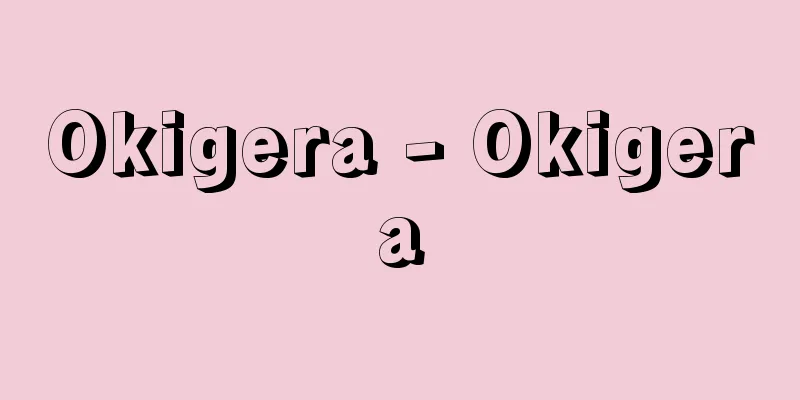Unkoku Togan - Unkoku Togan

|
Year of death: 4th May 3rd of Genna (1618.6.25) Year of birth: Tenbun 16 (1547) A painter from the Momoyama and early Edo period. Founder of the Unkoku school. His real name was Hara Jihei Naoharu. He was the second son of Hara Bungonokami Naoie, lord of Nokomi Castle in Tsu County, Hizen Province (Kashima City, Saga Prefecture). When his father was killed in battle, the family line became extinct, and he moved to Tokyo to become an apprentice to the Kano school, and is said to have aspired to become a painter. Painting traditions from the Edo period state that he studied under Kano Eitoku or his father, Shoei, and even after he was employed by Mori Terumoto in Aki (Hiroshima Prefecture) at the end of the Tensho era (1573-1592), he sometimes called himself Kano Togaon. His stipend within the domain was about 100 koku, and he was fond of not only painting but also renga verse and the tea ceremony. In 1593 (Bunroku 2), he received Sesshu's "Chokan Scroll of Landscapes" and his former residence, Unkoku-ken, from Terumoto and at the same time became a monk, changing his name to Unkoku Togan, combining the name of his hermitage, Unkoku, and one character from Sesshu's given name, Toyo, and inheriting Sesshu's lineage of painting. Later records refer to Togan as "Sesshu III" and it is said that he fought with Hasegawa Tohaku over the correct lineage of Sesshu, but Togan himself only left a note stating "written by Togan, the youngest grandson of Sesshu," so the facts are unclear. After the Battle of Sekigahara (1600), when the Mori clan was reduced to the two provinces of Suo and Nagato, he left his eldest son Toya in Hiroshima and moved to Hagi (Yamaguchi Prefecture) to follow the Mori clan. His activities were not limited to the Hagi and Yamaguchi region, but he also produced screen paintings for Zen temples in Kyoto, such as Daitoku-ji Obai-in and Tofuku-ji Fumon-in, as well as feudal domains in Edo, and his name became known in the central art world. In 1611, he was awarded the title of Hokyo, and later Hokan. Gold and silver like the screen paintings at Toshun-ji Temple in Yamaguchi are rare, and the majority of his posthumous works, such as landscapes, figures, and maps of Gunma, are based on ink painting, and are precise, dignified, and restrained in expression. For this reason, his Togan paintings do not have the gorgeous, free-spirited feel of other Momoyama paintings, and their quiet, sombre expressions are closer to the Muromachi ink paintings of the previous period. <References> Tanaka Sukeichi, "People and Works of the Unkoku School" (Kokuka No. 820), Kawai Masatomo, "Yumatsu/Togan" (Complete Collection of Japanese Art Paintings, Vol. 11), Yamamoto Hideo, "Unkoku Togan and His Family" (Keiko Kawamoto) Source: Asahi Japanese Historical Biography: Asahi Shimbun Publications Inc. About Asahi Japanese Historical Biography |
|
没年:元和4.5.3(1618.6.25) 生年:天文16(1547) 桃山・江戸初期の画家。雲谷派の祖。本名は原治兵衛直治。肥前国津郡(佐賀県鹿島市)能古見城主原豊後守直家の次男。父の討死により家門が絶え,上京して狩野派に入門,画家を志したと伝えられる。江戸時代の画伝類は,狩野永徳あるいはその父松栄に師事したとし,天正年間(1573~92)末に安芸(広島県)の毛利輝元に召し抱えられたのちも狩野等顔と名乗ることがあった。藩内での給禄はおよそ100石,画事だけでなく連歌や茶の湯もよくした。文禄2(1593)年輝元より雪舟の「山水長巻」とその旧居雲谷軒を拝領すると同時に出家し,名も庵号雲谷と雪舟の諱等楊の1字をとって雲谷等顔と改め,雪舟の画系を継承した。後世の記録は等顔を「雪舟三世」となし,長谷川等伯と雪舟正系を争ったとも伝えるが,等顔自身は「雪舟末孫等顔筆」の款記しか残さず,事実関係は明らかでない。 関ケ原の戦(1600)後,毛利氏が周防・長門の2国に削封された際は,長男等屋を広島に残し,自らは毛利氏に従い萩(山口県)に移った。その活躍は萩・山口地方にとどまらず,大徳寺黄梅院,東福寺普門院など京洛の禅宗寺院や江戸の藩邸などでも障壁画を制作,その名は中央画壇にも知られた。慶長16(1611)年法橋,のち法眼にも叙せられる。山口の洞春寺障壁画のような金碧はまれで,山水・人物・群馬図など遺作の大半は,水墨を基調とし,精緻・謹直で抑制された表現を用いる。そのため等顔画には,他の桃山絵画のような華麗で自由奔放な気分はなく,その静かで沈鬱な表情はむしろ前代の室町水墨画に近い。<参考文献>田中助一「雲谷派の人と作品」(『国華』820号),河合正朝「友松/等顔」(『日本美術絵画全集』11巻),山本英男『雲谷等顔とその一族』 (川本桂子) 出典 朝日日本歴史人物事典:(株)朝日新聞出版朝日日本歴史人物事典について 情報 |
>>: Yunkou Grottoes - Yunkou Grottoes
Recommend
German-Japanese Agreement with the Communist International
…Anti-Communist pact signed between Japan and Ger...
Gazella gazella (English spelling) Gazellagazella
…[Yoshinori Imaizumi]. … Gazella gazella is a spe...
Processing statistics - Kakotokei
…Normal economic statistics are primary statistic...
Mankind - jinrui (English spelling) man
Humans are also called humans, but there are some...
Karaosmanoğlu Family - Karaosmanoğlu (English spelling)
A noble family (ayan) who ruled the Aegean coastal...
Omuro Tomb Group
<br /> A group of ancient tombs in Matsushir...
Opinion letter - Ikenfuuji
During the Nara and Heian periods, when the emper...
Young men - Wakashu
〘Noun〙 (also "wakashu")① A young person....
disc cutter
… [Development History] The world's first suc...
Orochi
A manga by Kazuo Umezu. An anthology series in whi...
Ichiyousei - Ichiyousei
...It also means the arrival of spring or the end...
Wish fulfilled - Cancer
…All of these spells are intended to remove the s...
Ariake Collection - Ariakeshu
This is the fourth collection of poems by Kambara...
Imamura Chisho
Date of birth and death unknown. A mathematician ...
Daijoin Temple
The most famous monzeki (head priest) of Kofuku-j...









